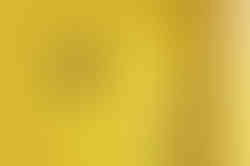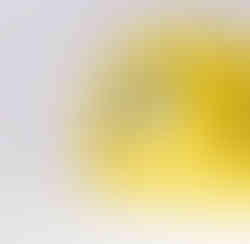Dieffenbachia 'Tropic Marianne' – Striking Foliage with Tropical Elegance
Dieffenbachia 'Tropic Marianne' is a cultivated selection of Dieffenbachia seguine (Jacq.) Schott, known for its luminous, pale central leaf coloring framed by deep green margins. Its bold variegation and upright growth habit give it a sculptural presence indoors, making it ideal for brightening shaded corners with minimal effort. The cane-like stems, lush tropical foliage, and overall resilience make this plant a go-to for those seeking dramatic looks with easy care.
Why Dieffenbachia 'Tropic Marianne' Stands Out
- High-Contrast Leaves: Pale yellow to ivory centers framed by dark green margins.
- Space-Efficient: Upright, columnar growth makes it ideal for compact interiors.
- Low Light Tolerance: Performs well in indirect or filtered light without losing its shape.
- Minimal Upkeep: Grows reliably with basic watering and humidity care.
Origin, Habitat, and Plant Characteristics
Dieffenbachia seguine, the species behind this cultivar, is native to humid lowland forests of Central and South America, including Brazil, Colombia, Venezuela, and the Caribbean. It naturally grows in the shaded understory of tropical rainforests between 0 and 800 m elevation, rooted in rich, well-draining soil with high ambient humidity and minimal direct sunlight.
‘Tropic Marianne’ inherits the thick, upright stem of the species and produces large, ovate to oblong leaves up to 50 cm long. Leaves emerge from short petioles and display a stable chimeric variegation — pale central tissue surrounded by dark green margins. Unlike many foliage plants, this variegation is genetically fixed and not influenced by light intensity. Mature plants may reach 60–100 cm in height indoors, forming a single, vertical axis with prominent leaf scars on the cane.
How to Care for Dieffenbachia 'Tropic Marianne'
Light
- Prefers bright, indirect light for optimal growth and leaf color retention.
- Avoid direct sunlight, which can cause leaf burn on pale tissue.
- Moderate shade is tolerated, though growth may slow slightly.
Watering
- Allow the top 2–3 cm of soil to dry between waterings.
- Keep soil evenly moist, never soggy, and avoid letting roots sit in water.
- Use room-temperature, dechlorinated water where possible.
Humidity & Temperature
- Thrives in humidity above 50%, though it adapts well to standard indoor air.
- Ideal temperature range: 18–24 °C. Avoid cold drafts and heat sources.
Soil and Potting
- Use a breathable mix with coconut coir, compost, and perlite for drainage.
- Choose pots with drainage holes. Terracotta helps regulate excess moisture.
- Repot every 1–2 years when roots become congested.
Fertilization
- Feed every 4–6 weeks using a balanced liquid fertilizer.
- Do not exceed label dosage; overfeeding can cause leaf tip burn.
Maintenance
- Remove yellow or damaged leaves at the base to maintain appearance.
- Wipe leaves regularly to remove dust and boost photosynthesis.
- Rotate the plant occasionally for even exposure to light.
Troubleshooting Common Issues
Yellowing Leaves
Often caused by overwatering or compacted soil. Let the top layer dry slightly and ensure proper drainage to prevent root stress.
Browning Edges
Low humidity or underwatering are the main culprits. Use a humidity tray, group plants together, or run a humidifier for improved air moisture.
Pests
Monitor for spider mites, mealybugs, and scale insects. Treat with insecticidal soap, neem oil, or introduce beneficial insects for biological control.
Additional Growing Tips
Keep the plant away from radiators and air conditioning vents to avoid sudden temperature fluctuations. Taller specimens may benefit from a discreet stake for upright support. Self-watering pots can work well if the soil remains loose and oxygenated — avoid letting the reservoir stagnate.
Etymology and Botanical Background
The genus Dieffenbachia was named in honor of Johann Karl Ernst Dieffenbach, a 19th-century German naturalist. The species name seguine refers to its original classification under Arum seguine by Jacquin. It was later reclassified by Heinrich Wilhelm Schott and published in Meisner's Plantarum Vascularium Genera, Vol. 2, p. 174, in 1856. The cultivar ‘Tropic Marianne’ is a stabilized clonal selection developed for ornamental use in indoor horticulture.
Frequently Asked Questions
- Can it grow in low light? Yes, but slower growth and reduced contrast in foliage may occur.
- How tall does it grow indoors? Typically reaches 60–100 cm with proper care.
- Is it safe for pets? No. Like all Dieffenbachia, it contains calcium oxalate crystals and should be kept away from pets and children.
Order Your Dieffenbachia 'Tropic Marianne' Today!
Ready to bring bold color and structure into your plant collection? Order now and enjoy the tropical flair of this low-maintenance, high-impact cultivar in your indoor space.
Dieffenbachia seguine 'Tropic Marianne'
Dieffenbachia 'Tropic Marianne' is approximately 70 cm tall and comes in a ⌀ 19 cm pot

























































